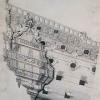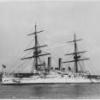-
Posts
1,145 -
Joined
-
Last visited
Reputation Activity
-
 Keith_W reacted to marsalv in Royal Caroline by marsalv - FINISHED - Panart
Keith_W reacted to marsalv in Royal Caroline by marsalv - FINISHED - Panart
Thank you Amfibius, special for you (of course for others as well ) some aditional picture from cheeks production. Pictures of assembled masts follow
-
 Keith_W got a reaction from yvesvidal in Bounty Launch by KeithW - FINISHED - Model Shipways - SMALL - kitbashed
Keith_W got a reaction from yvesvidal in Bounty Launch by KeithW - FINISHED - Model Shipways - SMALL - kitbashed
Finished early today. Rushed home, ripped my tie off, and within seconds was changed from an urban work drone and into my dingy modelling clothes
Today, I fabricated new thwarts for positions #1 and #4, and completed much work done yesterday.
This is the fore thwart (position #1). The reason why I need a new one is because I did not read the instructions properly! It says to position the foremast stay in relation to the fore thwart to achieve the correct rake. Well, I positioned my foremast stay according to the plans. When I came to test fit the fore thwart, the mast raked forwards!
As you can see, my new fore thwart is much wider than the one provided in the kit. It doesn't need to be that wide - in reality I probably need a couple of mm less. I will trim it when I come to fit the fore thwart so that it sits snug against the grating.
You should probably note that the thwart provided in the kit is too large for the mainmast - see the gaps around the dowel in the picture? The diameter of the fore thwart fits the mainmast perfectly though.
On the other hand, the thwart for the mainmast fits perfectly. This is pictured with my new #4 thwart.
And finally, here are some pictures of the boat as of right now. I painted on a blue stripe to match my Bounty. The planks look slightly shiny because they have just been given a coating of Tung Oil. I have to wait for the oil to cure before proceeding, so that's all for tonight.
Hmm, maybe I have time to start tapering the dowels for the masts ...
The instructions remind you that this is a working boat, and should not be finished "like a yacht". Well, it's MY boat, so i'll finish it like a yacht if I want to
-
 Keith_W got a reaction from CaptainSteve in Bounty Launch by KeithW - FINISHED - Model Shipways - SMALL - kitbashed
Keith_W got a reaction from CaptainSteve in Bounty Launch by KeithW - FINISHED - Model Shipways - SMALL - kitbashed
Finished early today. Rushed home, ripped my tie off, and within seconds was changed from an urban work drone and into my dingy modelling clothes
Today, I fabricated new thwarts for positions #1 and #4, and completed much work done yesterday.
This is the fore thwart (position #1). The reason why I need a new one is because I did not read the instructions properly! It says to position the foremast stay in relation to the fore thwart to achieve the correct rake. Well, I positioned my foremast stay according to the plans. When I came to test fit the fore thwart, the mast raked forwards!
As you can see, my new fore thwart is much wider than the one provided in the kit. It doesn't need to be that wide - in reality I probably need a couple of mm less. I will trim it when I come to fit the fore thwart so that it sits snug against the grating.
You should probably note that the thwart provided in the kit is too large for the mainmast - see the gaps around the dowel in the picture? The diameter of the fore thwart fits the mainmast perfectly though.
On the other hand, the thwart for the mainmast fits perfectly. This is pictured with my new #4 thwart.
And finally, here are some pictures of the boat as of right now. I painted on a blue stripe to match my Bounty. The planks look slightly shiny because they have just been given a coating of Tung Oil. I have to wait for the oil to cure before proceeding, so that's all for tonight.
Hmm, maybe I have time to start tapering the dowels for the masts ...
The instructions remind you that this is a working boat, and should not be finished "like a yacht". Well, it's MY boat, so i'll finish it like a yacht if I want to
-
 Keith_W reacted to woodrat in Venetian Carrack or Cocha by woodrat - FINISHED - 1/64
Keith_W reacted to woodrat in Venetian Carrack or Cocha by woodrat - FINISHED - 1/64
sort of like a majestic duck, wouldn't you say? Dick
-
 Keith_W got a reaction from yvesvidal in Bounty Launch by KeithW - FINISHED - Model Shipways - SMALL - kitbashed
Keith_W got a reaction from yvesvidal in Bounty Launch by KeithW - FINISHED - Model Shipways - SMALL - kitbashed
Thanks Tom and Jeff. I managed to do more work tonight - sober this time, and not hung over
In my previous post I described how to get a nice, crisp finish on a treenail. The first photo shows the treenail pushed through a plank. Note the top of the treenail is rather dull and has some stain. The second photo shows the proud area chiselled off - it now looks brighter.
After 5 coats of paint, I removed the masking tape. Not bad, but there are some errors which need to be cleaned up. I have also installed the thwart risers.
I did not show a picture, but I also dry fit the thwarts at this stage. All the other build logs have noted that either the thwarts are not wide enough, or the boat became more wide after removal from the jig. Well, I have the same problem! I measured the boat at 2mm wider than it should be - enough for the thwarts to fall off. 2mm isn't such a bad error, I could correct it simply by squeezing the boat together.
I will have to fabricate some new thwarts anyway to accomodate the repositioned mainmast. Thankfully there is enough spare material in the kit to do so. But - I think I will squeeze the boat when installing the thwarts. There should be enough glue power in the thwarts to hold the boat together.
I followed usedtosail's method of making the quarterdecks. First, I fit all the beams. Then, I laid down the center planks (along with spacers, as you can see). I then removed the quarter deck and transferred it to the plans, where I pinned it down. From there it was easy to trim the planks to fit as I went along. It would have been extremely fiddly to build it on the boat!
I should note that MS specified 1/4" planks for the quarterdeck, but they didn't supply any! Instead, they supplied 3/16" planks. Also, despite promising to supply "enough" square cherry dowels, I had just enough to install the frames with none left over. Fortunately I had spare square dowel from another kit. I went ahead and built the quarterdeck with the 3/16 planks. If I am not happy with the result, I will ask MS to send me 1/4" planks.
Tomorrow - I will treenail the quarterdeck.
-
 Keith_W reacted to aliluke in HMS Bounty Jolly Boat by DCooper - Artesania Latina - 1:25 - SMALL
Keith_W reacted to aliluke in HMS Bounty Jolly Boat by DCooper - Artesania Latina - 1:25 - SMALL
Just caught up with this log Dan. Great work - it looks fantastic. Spotted your question about mounting it on a base - for something as fine as this I'd go for brass rods rather than pedestals. These make the boat look like it is afloat. The finer the rods the better but just two straight rods and you are sorted in my opinion.
Cheers
Alistair
-
 Keith_W got a reaction from yvesvidal in Bounty Launch by KeithW - FINISHED - Model Shipways - SMALL - kitbashed
Keith_W got a reaction from yvesvidal in Bounty Launch by KeithW - FINISHED - Model Shipways - SMALL - kitbashed
That's fine esion, if you are almost finished i'll wait for your completed model
Before I went for my NYE party yesterday I managed to mask off the bottom of the boat and apply 3 layers of white paint. When I came home (blind drunk, at 3AM) I managed to add another layer, miraculously without spilling paint all over myself, the floor, or the boat. I left the paint to dry, had a shower, then went to sleep.
I woke up at close to noon with a nasty hangover but that didn't stop me from trudging down into my modelling room to do more work. Wasn't such a good idea, given how many mistakes I made today. The reason why I am going so slow is because I have gone treenail crazy and i'm treenailing everything:
The sheer clamps and windlass holder have been treenailed and installed. Note that the wood has been stained, yet the treenail sits flush and crisp against the plank. How to get a crisp finish - stain the wood and allow to thoroughly dry. Drill the hole for the treenail, then dip the treenail in slightly diluted PVA glue (I use 9:1 PVA to water). Push the treenail through and allow it to sit slightly proud, about 0.1mm. You will note that simply by pushing the wet treenail through stained wood, the surface of the treenail will be slightly stained! When the PVA glue is dry, chisel off the proud area, then lightly sand with 800 grit sandpaper - this will leave you a crisp treenail.
The center floorboard was likewise treenailed.
I made a little jig to help space the planks evenly. The pictures are self explanatory.
This is where I am up to right now. Note that I have moved the mainmast closer to the windlass.
Tomorrow after work - i'll complete the floorboards, sand back the painted area and give it another coat of paint.
-
 Keith_W got a reaction from CaptainSteve in Bounty Launch by KeithW - FINISHED - Model Shipways - SMALL - kitbashed
Keith_W got a reaction from CaptainSteve in Bounty Launch by KeithW - FINISHED - Model Shipways - SMALL - kitbashed
First step is to build the keel. There are 7 parts to this keel, and they need to be joined precisely. The instructions suggest to use the plans as a guide, with some plastic wrap for protection - so that's what I did.
The next step was to build my building board and assemble the construction jig. I bought the squares from a hardware store.
After the glue on the keel had dried, I cut out the rabbet. The kit designers made it easy by inscribing the rabbet line in laser. It was a simple matter of removing the material with a chisel. I bought this chisel for this project, and I was surprised by how sharp it was. It goes through wood like butter. Next to it is my Japanese carving knife, also incredibly sharp.
Rabbet completed.
I stained a scrap piece of wood with a selection of stains. Oak and Elm look too similar, and both are too dark. Maple is too red. Old Baltic was acceptable, but too brown. Golden Teak was close to the finish I wanted (a light honey wood), but it was too bright. I decided to mix Golden Teak and Old Baltic 50:50 (panel on the far right) to obtain the finish that I wanted.
Having decided on the finish, I then stained the planks prior to construction.
-
 Keith_W reacted to Landlubber Mike in Landlubber Mike's technique for furled sails
Keith_W reacted to Landlubber Mike in Landlubber Mike's technique for furled sails
My approach
Like the other sails, I started by drawing a general outline of the driver sail, tracing the plans for the gaff, main mast and boom, and then just drawing a line for the leech end of the sail. The next step was to draw the pattern for the reduced sail. Here, there were three considerations: (1) how to reduce it enough that I could get a tightly furled sail; (2) how to design the pattern so that the furled sail bulk would be thinner at the peak and tack, and thicker in the area in between; and (3) mechanically, how would I proceed with the furl given that the furl takes multiple directions along the brail lines.
Here is what I came up with:
The total bulk of the sail is reduced to about 40% of the full sail size. The depth along the head and along the luff is about the depth of what I used for the furled fore and main course sails.
The shape is a bit odd in that at the head area, the leech end is angled inward, while at the foot, it runs parallel to the boom (on actual mizzen sails, I believe the foot of the sail was curved). This was because of the way I planned to furl the sail. First, I furled the sail up to the gaff, similarly to how I furled the square sails. So, the leech end, like the sides of the square sails, was angled inwards to reduce bulk at the peak. Second, I furled the sail at the throat area and the luff side. The foot is parallel to the boom and not angled as the head was because I realized that as I furled the gaff area, the outer edge of the foot would be pulled upwards, essentially angling the leech end near the foot upwards. So, there was no need to cut the pattern to an angle like I did with the head (otherwise, I would have almost no sail to work with at the tack). Hope that all makes sense.
The other thing to note is that I added a mock clew at the edge of the sail. Given the shape of the overall driver sail, I thought the clew on the actual sail would end up midway along the luff, rather than at the throat. I also wanted to add an outhauler line that was attached to the clew. I modeled this off the MS Brig Niagara instructions, where the clew is brailed up the middle of the luff.
With the pattern cut, I prepped the sail to attach it to the gaff. I added lacing holes along the head (5mm apart) to run the lacing to the gaff. I also added cringles along luff area (10mm apart) so that I could subsequently attach it to the mast. I also added clew and tack cringles at those areas.
From my research, it seemed that these sails were bent to the gaff with simple lacing that ended at the throat of the gaff. I went with 5mm apart for the holes, which was what I used on the square sails. The sails are bent to the mast using a different lacing pattern (shown in the next post) using cringles, which I represented by running a line of thread along the edge using fabric glue, and pulling it up every 10mm to create the cringle. Given that the sail will be furled, these will not be visible later on. They did serve as a good guide for the mast lacing however, which I couldn't accomplish using holes drilled into the sail itself.
-
 Keith_W reacted to Landlubber Mike in Landlubber Mike's technique for furled sails
Keith_W reacted to Landlubber Mike in Landlubber Mike's technique for furled sails
Next step was to furl the sail as much as possible off the build before attaching the gaff to the main mast:
I was able to completely furl the head area along the gaff up to the throat of the gaff. You'll see I used three gasket type lines to hold the furl here, to somewhat represent the brail lines. Not sure if this would be accurate as I think the brail lines actually ran through brail blocks at the gaff, and then were belayed down to the deck. But, this would have been overly complicated at this scale, not to mention that multiple pins and cleats would have to be added. So, I went with these three gasket type lines. Ultimately, I went with two along the gaff, and moved the remaining line to the throat area of the sail (and not at the throat of the gaff itself).
I was also able to get the luff edge furled pretty well at this stage as well. My plan of not angling the foot worked out pretty well, as you can see that the bulk is greatly reduced at the tack, with most of the bulk at the throat. In case you're wondering, I'm using napkins under the red clothespins because I've found that the color on these colored clothespins can rub off on the sail cloth
From there, it was a matter of installing the gaff and lacing it to the mast. As noted above, the lacing for the mast is a bit different than the lacing to the gaff - I think zu Mondfeld has 10 different approaches in his book. From my research, part of the reason for the different lacing was so that the sail could slide more easily up and down the mast. I used the mast lacing pattern as in this diagram:
Next I furled the rest of the sail, and added two more brail lines against the mast. I also added a block and tackle arrangement at the deck as you can see in the third picture below. I'm also planning on adding the outhauler line, which would run from the tack clew, through a sheeve at the end of the boom, and belayed at a deck cleat at the base of the main mast. The kit plans have two pairs of deck cleats to be installed at the base of the main mast, with only one pair used, so all I needed to do was add an extra pair of eyebolts to the deck.
They still need some work to try and get in some folds, etc., but overall it came out somewhat ok I think. I'd also note that in addition to real drivers having brail lines and blocks, there are a number of other inhauler/outhauler lines at the peak, as well as lines at the end of the boom. For my build, I thought they would add too much complication given the kit's pin and cleat configuration, and I had already installed them per the kit plans before deciding on the furled sails.
So that's how I added a furled driver. There are probably better ways of doing this, but hopefully this helps give people a jump start on how to approach them - I had searched all over the internet for methods on how to install a furled driver, but couldn't find any so hopefully this helps a bit.
Thanks for reading!
-
 Keith_W reacted to Landlubber Mike in Landlubber Mike's technique for furled sails
Keith_W reacted to Landlubber Mike in Landlubber Mike's technique for furled sails
First, the clews are created and attached. I made them using 0.25mm natural thread from kit. I ended up making them a tad longer and ran them into the sail and up along the outside edge a bit farther than necessary to ensure that the clews were visible when the dog-ears were folded down. They were attached with fabric glue.
Next step was to bend the sail to the yard. I didn't take pictures while this was in process, so hopefully the following description makes sense. I used 0.25mm thread here as well. First step was to mark on the front of the sail the points where the thread would be run through the sail - I marked points 5mm apart. Second, I used a running knot to attach the line on one end of the yard. Third step was to run the line from the front into the rear of the sail, then as you loop it over the yard, run it underneath the prior line and repeat til the end. It got a bit tricky with the yard horses and blocks, but after a while you get the hang of it. Once the sail was fully attached, go back and tighten the lines by pulling the vertical line towards the other end of the yard, and down along the top of the rear of the sail.
Next step was the first fold. From the front of the sail, the bottom half was folded up so that the bottom line between the two dog ears was at the top of the sail.
Next step was to fold the bottom corners up and in, to help add more volume to the middle of the yard, and reduce the volume at the ends.
Next step was to furl the sail and attach the gaskets. From my research, when furling the sails, the sails were "gathered up" such that the sail was folded into an accordion type of pattern with the final fold up and against the top of the yard. That was a bit hard to do at this scale, so I ended up just folding and rolling the sail up from the front until it was tight against the yard. Took a few tries, which helped I think to get the cloth more relaxed to get a tighter furl.
Then the gaskets were installed. I started with one in the middle, and then added three to each side roughly evenly spaced out. These were fairly easy to do using a running knot, and then using tweezers to help tighten the furl as the gasket was tightened (sometimes with the help of some fabric glue to help keep the material furled). After a few final adjustments, the knots were sealed with diluted PVA, and then the extra lines cut off.
Finally, using fabric glue, the dog ears for the clews were bent downward and glued into position.
There you have it - the no sew method of furling sails. I spent an inordinate amount of time researching and thinking about how to do these, so hopefully these look relatively authentic. I know that opinions differ on whether sails should be attached or not, but I think furled sails add a nice touch and are a good compromise given the scale issues with adding full sails - plus, these are sailing ships after all
I think there were lines running from the clews downward which helped to keep them in their downward orientation (and probably keep the furl tight). I haven't figured out where those lines go, so if anyone has the answer, I would love to hear it
The topsails and courses will be a bit trickier, given that they have blocks for the bunt lines, and yard horses. I'm thinking that I will pre-rig the bunt lines by gluing a portion of the line into the sail to be furled, which will eventually be run through the blocks. The instructions have the line started at the block by knotting one end of the line before it is run through the blocks - I think, however, that the line is technically started at the buntlines in the sail which are run through the blocks on the yard. Haven't fully figured that out yet, so again, would love to hear from anyone with answers on how that works.
I also have to do a little more research on the spanker and jibs - the spanker should be relatively straightforward, but how to reduce the sail to remove bulk while maintaining the brail lines will be tricky. The jibs are are complicated, in that there are hanks, jib stays and travelers that need to be attached. All part of the fun I suppose
Thanks for looking in!
-
 Keith_W reacted to Mike Y in Modifying a kit planking scheme
Keith_W reacted to Mike Y in Modifying a kit planking scheme
Actually sometimes the real planks end like a sharp points. I was really surprised when I saw how Vasa planked Take a look on the bottom part
-
 Keith_W got a reaction from Q A's Revenge in Modifying a kit planking scheme
Keith_W got a reaction from Q A's Revenge in Modifying a kit planking scheme
1. You are correct, the planking as depicted in that picture is a compromise to make construction easier. Real planks are not shaped like triangles, nor do they terminate as sharp points. Take a look at some of the other build logs, especially the scratch built logs to see how planks are tapered.
2. You can make a complete dogs breakfast of the first layer of planking if you want, and then use a lot of woodfiller and sand it like crazy. That's what I did with my first kit! The second layer will hide all your sins. But really, you should look at your first layer as a practice run for your second layer. Try as best as you can to follow good practice - you will learn heaps.
-
 Keith_W got a reaction from Hubac's Historian in ROYAL CAROLINE 1749 by Doris - 1:40 - CARD
Keith_W got a reaction from Hubac's Historian in ROYAL CAROLINE 1749 by Doris - 1:40 - CARD
Doris, it seems like such a shame to hide all your work under a roof. May I suggest that rather than make a roof, you make a clear plastic covering instead? You can buy a sheet of polycarbonate, heat it up in an oven, then bend it over a mould.
-
 Keith_W got a reaction from DORIS in ROYAL CAROLINE 1749 by Doris - 1:40 - CARD
Keith_W got a reaction from DORIS in ROYAL CAROLINE 1749 by Doris - 1:40 - CARD
Doris, it seems like such a shame to hide all your work under a roof. May I suggest that rather than make a roof, you make a clear plastic covering instead? You can buy a sheet of polycarbonate, heat it up in an oven, then bend it over a mould.
-
 Keith_W got a reaction from maddog33 in Bounty Launch by KeithW - FINISHED - Model Shipways - SMALL - kitbashed
Keith_W got a reaction from maddog33 in Bounty Launch by KeithW - FINISHED - Model Shipways - SMALL - kitbashed
Thanks Jeff-E
Anyway, I managed to do more work yesterday and today.
After installing the cant frames, I noted that there is a gap between frames 2-3, and 3-4 as per the plans. I then checked with McKay's AOTS Bounty and saw that the boat as depicted by MS differed from McKay. I am not sure which is more correct, but it sure looks strange - especially since the frames are visible on my build.
... I therefore bent a couple more ribs and taped them in place. They look MUCH better in my opinion. I therefore glued them in place.
After the hull was sanded down, I drilled dozens of little holes and started plugging them with treenails. I thought I would hate putting treenails in, but it's actually quite fun. Unfortunately, I ran out of walnut dowel to make treenails, so I had to substitute. This meant studying the plans to see which treenails were going to be visible. Anything below the waterline was not critical - I planned to paint it. That left the internal treenails. I made some more treenails with bamboo, and thought I would simulate treenails with woodfiller.
I was concerned that the treenails would look different, so I only used bamboo and woodfiller treenails on areas that would be painted over. Here is the hull after drying, about to start sanding.
Sanding is complete, and I stained the wood again. Once stained, it is quite difficult to tell the difference between bamboo and walnut, but I can tell you that it is MUCH easier to draw walnut through a drawplate than bamboo! It is just a more pleasant wood to work with.
This photo shows the difference between the walnut treenails and the simulated treenails using woodfiller. It doesn't really do justice - the real treenails look MUCH better in real life - it just looks more defined and sharper.
-
 Keith_W reacted to DCooper in HMS Bounty Jolly Boat by DCooper - Artesania Latina - 1:25 - SMALL
Keith_W reacted to DCooper in HMS Bounty Jolly Boat by DCooper - Artesania Latina - 1:25 - SMALL
Progress;
So far so good. Had to use a bit of brown two part epoxy putty to fill some bits at the bow and stern where parts just don't meet up properly. Most of what I'm not happy with is my own sloppy assembly. Not enough dry fitting and thinking ahead. I had to use some extra material to make the foot boards work because I didn't take the time to lay them out properly. Learning all the time and that's a good thing.
Next on the list is to get the rudder fitted and make a start on the masts. I'm really unsure of all this but will forge ahead. I want to do more like what Jay has in his build rather than what the instructions show. I'll need to look over his posts a bit more before I commit to brass and wood.
Still having fun, so much so that I'm thinking about a suitable next kit. Must be small because I need to push though and get it finished. Lots more to do on this one so plenty of time.
Jay - Thanks for the kind words and wonderfully complete build posts. I'm going over them again and again for guidance.
Amfibius - If you find a use for my photos I'd be honoured to be included in any posts you have planned.
Ps. There are only little cut outs on the side of the hull for the oars to sit in. Shouldn't there be some kind of oarlock or at least an edge piece to support the top edge of the hull? Any suggestions or am I just over thinking this.
Thanks for dropping by for a look.
-
 Keith_W got a reaction from DORIS in ROYAL CAROLINE 1749 by Doris - 1:40 - CARD
Keith_W got a reaction from DORIS in ROYAL CAROLINE 1749 by Doris - 1:40 - CARD
I just love your work. Of all the Royal Carolines I have seen, yours is the most "Royal".
-
 Keith_W got a reaction from WackoWolf in HMS Bounty by Captain Al - FINISHED - Artesania Latina - Scale 1:48
Keith_W got a reaction from WackoWolf in HMS Bounty by Captain Al - FINISHED - Artesania Latina - Scale 1:48
Capt, this is why I suggest you practice planking on a more simple boat before attempting the Bounty. It is a difficult kit, one that even experienced modellers may not find easy.
I whipped up a quick diagram in Paint to illustrate:
This shows a plank meeting a bow frame. The bow frame has been tapered to accept the plank. Note how the nails in position (1) and (3) grab on to a tiny amount of wood. You should ideally place the nail in position (2), but if your nails are long they will still exit the wood.
This is why you should be adding material to fill in space in between the frames in front. Needless to say, you need to shape it to conform to the run of planks as well.
What parts do you need to paint or varnish? I can't tell you. Study the plans carefully. Are you going to position your model high up so people might see the underside of the decks? Then you need to finish the underside of your decks (I didn't, since my model is low). Don't just look at my build, there are umpteen others on MSW which are better.
-
 Keith_W reacted to DCooper in HMS Bounty Jolly Boat by DCooper - Artesania Latina - 1:25 - SMALL
Keith_W reacted to DCooper in HMS Bounty Jolly Boat by DCooper - Artesania Latina - 1:25 - SMALL
Pretty simple setup Amfibus.
Ixus 65 point and shoot on a very stable Manfrotto tripod. Camera set for Macro, ISO 80 and under exposed -2/3 plus timed delay to avoid shake. Two white foam core bounce cards to get some light into the shadows under the hull. Then a few post corrections in iPhoto to crop, resize, correct for colour and sharpen the image a touch. I find that iPhoto is a simple way to fix some of the limitations of my simple camera. Would love to upgrade to a DSLR... Maybe someday.
Glad you like the hull so far. I do like taking nice clear photos. IHTH
Dan
-
 Keith_W got a reaction from WackoWolf in ROYAL CAROLINE 1749 by Doris - 1:40 - CARD
Keith_W got a reaction from WackoWolf in ROYAL CAROLINE 1749 by Doris - 1:40 - CARD
I just love your work. Of all the Royal Carolines I have seen, yours is the most "Royal".
-
 Keith_W got a reaction from EricWilliamMarshall in Bounty Launch by KeithW - FINISHED - Model Shipways - SMALL - kitbashed
Keith_W got a reaction from EricWilliamMarshall in Bounty Launch by KeithW - FINISHED - Model Shipways - SMALL - kitbashed
While I am waiting for my planks to dry, I started bending the frames, using the construction jig as a guide. I know that all of us have our own way of bending frames, but I have never seen this method described on MSW or anywhere else, for that matter. It is far from my role to teach you experienced modellers how to suck eggs, but it may be useful for beginners. So here it is, step by step.
Soak the wood for 24 hours, then clamp one end on the frame.
Using a steam iron, press down on the plank for a few seconds. The wood will soften and bend easily.
Once the wood bends, clamp it down before attempting the next curve.
Almost there ...
Finished. Note how tight the plank is to the jig. Leave it to air dry for 24 hours, then remove the clamps.
I believe that this method has quite a few advantages over other plank bending methods:
- you already own the equipment (you do own a steam iron, don't you?),
- pressing the plank between the iron and the jig lessens the risk of breaking the plank,
- very tight bends, and very precise fit can be achieved
- the iron is not as hot as a soldering iron, so it won't scorch the wood
When I removed the clamps, the plank was curved so tightly to the jig that I had to gently pry it off. Anyway, this is where I am up to. Will continue the build log as the model progresses.
-
 Keith_W got a reaction from coxswain in Bounty Launch by KeithW - FINISHED - Model Shipways - SMALL - kitbashed
Keith_W got a reaction from coxswain in Bounty Launch by KeithW - FINISHED - Model Shipways - SMALL - kitbashed
While I am waiting for my planks to dry, I started bending the frames, using the construction jig as a guide. I know that all of us have our own way of bending frames, but I have never seen this method described on MSW or anywhere else, for that matter. It is far from my role to teach you experienced modellers how to suck eggs, but it may be useful for beginners. So here it is, step by step.
Soak the wood for 24 hours, then clamp one end on the frame.
Using a steam iron, press down on the plank for a few seconds. The wood will soften and bend easily.
Once the wood bends, clamp it down before attempting the next curve.
Almost there ...
Finished. Note how tight the plank is to the jig. Leave it to air dry for 24 hours, then remove the clamps.
I believe that this method has quite a few advantages over other plank bending methods:
- you already own the equipment (you do own a steam iron, don't you?),
- pressing the plank between the iron and the jig lessens the risk of breaking the plank,
- very tight bends, and very precise fit can be achieved
- the iron is not as hot as a soldering iron, so it won't scorch the wood
When I removed the clamps, the plank was curved so tightly to the jig that I had to gently pry it off. Anyway, this is where I am up to. Will continue the build log as the model progresses.
-
 Keith_W got a reaction from malmoerik in Bounty Launch by KeithW - FINISHED - Model Shipways - SMALL - kitbashed
Keith_W got a reaction from malmoerik in Bounty Launch by KeithW - FINISHED - Model Shipways - SMALL - kitbashed
While I am waiting for my planks to dry, I started bending the frames, using the construction jig as a guide. I know that all of us have our own way of bending frames, but I have never seen this method described on MSW or anywhere else, for that matter. It is far from my role to teach you experienced modellers how to suck eggs, but it may be useful for beginners. So here it is, step by step.
Soak the wood for 24 hours, then clamp one end on the frame.
Using a steam iron, press down on the plank for a few seconds. The wood will soften and bend easily.
Once the wood bends, clamp it down before attempting the next curve.
Almost there ...
Finished. Note how tight the plank is to the jig. Leave it to air dry for 24 hours, then remove the clamps.
I believe that this method has quite a few advantages over other plank bending methods:
- you already own the equipment (you do own a steam iron, don't you?),
- pressing the plank between the iron and the jig lessens the risk of breaking the plank,
- very tight bends, and very precise fit can be achieved
- the iron is not as hot as a soldering iron, so it won't scorch the wood
When I removed the clamps, the plank was curved so tightly to the jig that I had to gently pry it off. Anyway, this is where I am up to. Will continue the build log as the model progresses.
-
 Keith_W got a reaction from yvesvidal in Bounty Launch by KeithW - FINISHED - Model Shipways - SMALL - kitbashed
Keith_W got a reaction from yvesvidal in Bounty Launch by KeithW - FINISHED - Model Shipways - SMALL - kitbashed
While I am waiting for my planks to dry, I started bending the frames, using the construction jig as a guide. I know that all of us have our own way of bending frames, but I have never seen this method described on MSW or anywhere else, for that matter. It is far from my role to teach you experienced modellers how to suck eggs, but it may be useful for beginners. So here it is, step by step.
Soak the wood for 24 hours, then clamp one end on the frame.
Using a steam iron, press down on the plank for a few seconds. The wood will soften and bend easily.
Once the wood bends, clamp it down before attempting the next curve.
Almost there ...
Finished. Note how tight the plank is to the jig. Leave it to air dry for 24 hours, then remove the clamps.
I believe that this method has quite a few advantages over other plank bending methods:
- you already own the equipment (you do own a steam iron, don't you?),
- pressing the plank between the iron and the jig lessens the risk of breaking the plank,
- very tight bends, and very precise fit can be achieved
- the iron is not as hot as a soldering iron, so it won't scorch the wood
When I removed the clamps, the plank was curved so tightly to the jig that I had to gently pry it off. Anyway, this is where I am up to. Will continue the build log as the model progresses.









.thumb.jpeg.fc5d633a7b34428fcf19419a73d56d55.jpeg)
